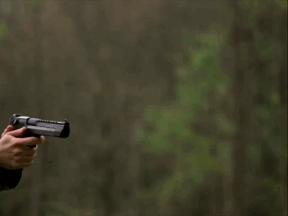
Comparing Barrel Twist Rates
Rifling 101
When a bullet is fired, the rifling of the barrel puts a twist on the bullet in order to improve accuracy, increase the distance traveled, and to stabilize the bullet as it moves through the air towards its target. Twist rates are often set up as a ratio, such as 1:14, 1:12, or 1:7, which refers to inches per turn. A twist rate of 1:10 means the bullet will turn one time in 10 inches of the barrel.
Rifling was discovered in 15th century Germany and most likely took the science behind arrows, which are fletched in a way that the arrow spins, thereby increasing its accuracy. It did not gain popularity until the 18th century, and was a crucial tool for the young United States to beat the British in the Revolutionary War. Nowadays, gunsmiths use either cut rifling or button rifling to produce this effect, but either technique effectively adds raised lands and depreciated grooves along the length of the barrel that cause the bullet to rotate before it ever leaves the gun.
 There are many factors that can affect the twist rate of a barrel. Even the same type of guns from different manufacturers can have different rates, and this can be very confusing to people who are new at purchasing or analyzing rifles. Furthermore, different bullets will require different twist rates for proper stabilization depending on their weight.
There are many factors that can affect the twist rate of a barrel. Even the same type of guns from different manufacturers can have different rates, and this can be very confusing to people who are new at purchasing or analyzing rifles. Furthermore, different bullets will require different twist rates for proper stabilization depending on their weight.
For example, if you want to shoot more accurately over a longer distance with a gun such as the AR-15, you may decide to upgrade from a 62-grain bullet to a 77-grain bullet; the lighter bullet requires a twist rate of 1:8 while the heavier bullet in question requires a rate of 1:7; in fact, a much lighter 40-grain bullet only requires a twist rate of 1:12.

It is important to note that you could potentially use any grain bullet for the rifle, but the accuracy will vary at different distances, so it is important to know at what distance you would like to shoot. Furthermore, a lower ratio means an increased speed, so a twist rate of 1:7 will travel faster than one at 1:9, because it will complete a full rotation in only 7 inches compared to 9, and so it makes sense that a heavier bullet needs a higher twist rate to be accurate.
Since many gun manufacturers may use a different barrel twist rate for their gun, it is important to research before purchasing a rifle so that it can fit the intended requirements. Although it may be difficult to determine at what range you intend to fire the rifle most often, a little bit of gun training will allow you to determine your needs. For example, an expert marksmen may want to shoot at a longer range when he hunts out in the open, while someone who usually hunts in the woods may not need to fire at longer distances because there is usually increased coverage.
For a while many people believed that a slower twist rate would cause poor accuracy, which is true, but some also believe that having too high of a twist rate could “over-stabilize” lighter bullets, also decreasing accuracy. This idea has been debunked by ballistics experts, although firing a very light bullet through a gun with a very high twist rate could still decrease its structural integrity.
However, for the most part a higher twist rate will increase accuracy across the board, especially if closely paired with the correct bullet weight. Nowadays, almost all standard military-grade weaponry has a twist rate of 1:7, while you will find hardly any rifles now with twist rates less than 1:14.
It is also important to keep barrel lengths in mind. Comparing a 10.3″ AR-15 with a different model 18″ barrel, both with a 1:7 twist rate, shows that the smaller barrel is pretty accurate with 55- to 77-grain bullets, while the longer barrel was extremely accurate with higher grain bullets but virtually useless with the lighter options below 70-grain. Although it is impossible to tell exactly what sort of bullet and barrel combinations will be best, knowing a little about twist rates can make it easier to get close, and from there it’s just practice and trail and error.
Source: Wikipedia



